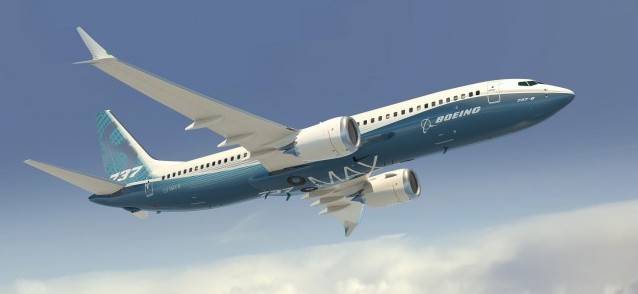
The Boeing 737 MAX 8 – Image: Boeing
Today, Air Canada, in a surprising move, has decided to replace their current Airbus narrowbody fleet with the offering from the competition – the Boeing 737 MAX.
They have ordered a total of 61 of the aircraft, with 33 going to the MAX 8 and 23 to the larger MAX 9. The “up to 109” part of the transaction comes from 30 purchase rights and 18 options. At list prices, the firm orders would be a transaction of over six billion dollars, but you better believe that the airline made a stellar deal for the planes.
“We are pleased to announce our agreement with Boeing for the purchase of 737 MAX aircraft as part of the ongoing modernization of Air Canada’s fleet,” said Calin Rovinescu, President and CEO of Air Canada. “Renewal of our North American narrowbody fleet with more fuel efficient aircraft is a key element of our ongoing cost transformation program and the enhanced passenger cabin comfort provided by the Boeing MAX will help us to retain Air Canada’s competitive position as the Best Airline in North America. Our narrowbody fleet renewal program is expected to yield significant cost savings. We have estimated that the projected fuel burn and maintenance cost savings on a per seat basis of greater than 20 per cent will generate an estimated CASM reduction of approximately 10 per cent as compared to our existing narrowbody fleet.”
By 2019, Air Canada plans to have an all Boeing long-haul fleet, and a majority Boeing short-to-medium haul fleet. Currently, the airline operates a fleet of 27 Airbus A319s, 36 A320s and 10 A321s.
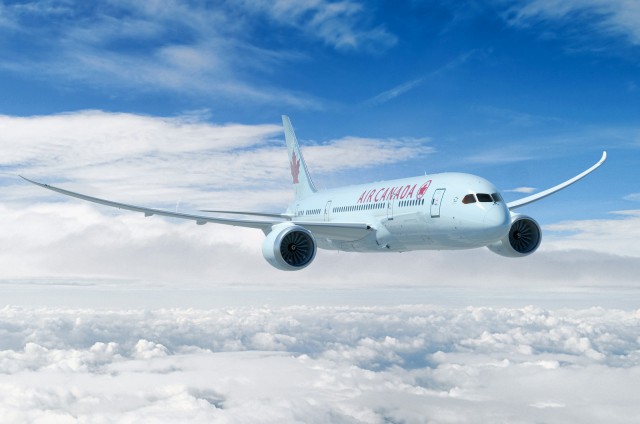
Air Canada Boeing 787-8 Dreamliner – love that wing! – Image: Air Canada
Air Canada has just released details of a new cabin design for their soon-to-be-received Boeing 787-8 Dreamliner. The first three aircraft will be delivered to Air Canada in the spring of 2014. The first AC routes to receive the 787 will start on July 1, 2014 from Toronto (YYZ) to Tel Aviv (TLV), and a new Air Canada route from YYZ to Tokyo-Haneda (HND). The Dreamliners will also fly on select domestic Canada and international flights on a “preview” basis as they come into the fleet, which we’ve seen with other new 787 operators.
Not unlike AC’s new 777-300s, the Dreamliners will have three cabins – International Business Class, Premium Economy, and Economy. The 787-8s will have a total of 251 seats (comparable to LOT Polish’s 787s, seating 252, which we featured earlier this year). Air Canada describes the 787’s cabin color palette of slate grey and neutral tones, accented with “Canadian red” and “celeste blue”, as being contemporary and sophisticated.
BONUS – Air Canada’s 787 Seating Chart
The 787’s Business Class isn’t like J-class in the new 777 or older AC planes. The new 787-8 configuration is a “reverse herringbone”, with four-across seating in a 1-2-1 setup, for a total of 20 lie-flat seats. AC’s older wide-bodies have a “herringbone” Business Class, where the seats face towards the aisle. Instead, the outer pods in the 787 will face the windows, and be angled towards each other in the middle of the cabin. I’m looking forward to seeing this setup; it isn’t easy to look out the window in the current J-class, and it’s challenging to chat with a partner when you’re both in the opposite-facing middle seats. The 787’s window seats might be a bit quieter, too, because your head won’t be up against the outer wall of the fuselage.
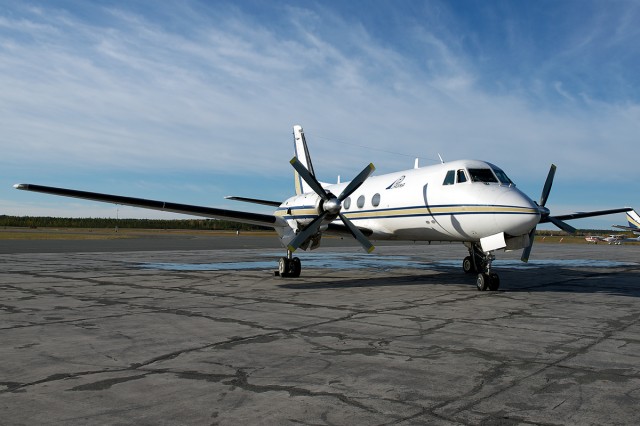
C-FAWE, Propair’s only Gulfstream I. It was U/S at CYUY. Photo: Bernie Leighton | AirlineReporter
In between scheduled flights, I found a Propair employee. I asked him all of one question: “Can I take a look around the Gulfstream?”
His answer, as far as I could tell, was yes.
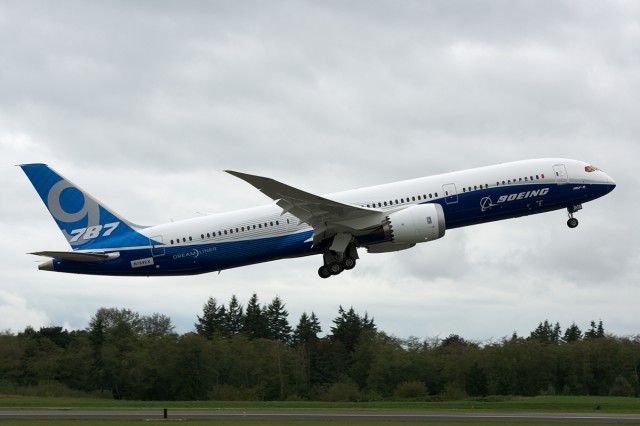
ZB-001 (N789EX) the first Boeing 787-9, takes to the sky – Photo: Bernie Leighton | AirlineReporter.com
At 11:02am this morning, ZB-001 the first Boeing 787-9, became airworthy as it departed Paine Field in Everett, Washington on its first flight.
Boeing’s inaugural flight of the 787-9 was originally scheduled for 10am Pacific Time, but as is usual for ’œBoeing Time’ there was a few delays. The weather may not have been as perfect as the flight tests for yesterday’s CS100 flight from Mirabel, but there was no rain, which is always a positive for Seattle this time of year. With over 10,000 employees in attendance and lots more of the Everett flight line crews watching (plus thousands more watching the live webcast), it was a spectacle that many were anxiously awaiting.
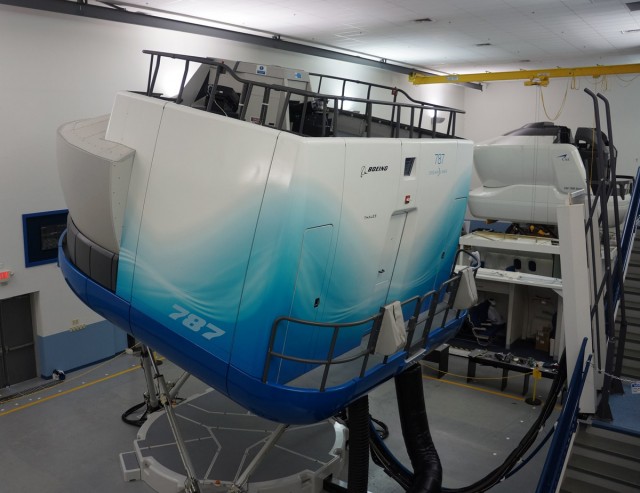
The Miami-based Thales 787 simulators are already operating around the clock, according to Boeing. Photo: Chris Sloan / Airchive.com
Reported and Photographed from Miami by: Chris Sloan, Airchive.com Editor-in-Chief
Miami is now Boeing’s ’œSim City,’ but Airchive’s home base has been an aviation hub dating back to the early days of the industry. Hallowed names like Pan Am, National, Eastern, Glenn Curtis, Rich International, and Air Florida have played pivotal roles in the world’s aviation industry from South Florida. OK, maybe that last name is a bit of a stretch.
Today, Miami boasts America’s second-busiest international airport and number one international cargo airport ’“ MIA, American Airlines’ bustling Latin American hub, and the UPS hub of the Americas. Perhaps the most iconic name in aviation, Boeing joined South Florida’s famed aviation industry in 1997 when they established a joint-venture with Flight Safety, FlightSafety Boeing Training International.
In 2002, Boeing bought out their partner. They join Airbus’ Americas Training Center and the Pan Am Flight Academy (just purchased this week by Japan’s ANA) in the little Miami suburb of Virginia Gardens, now home to one of the largest concentrations of flight simulators and commercial aviation training of any city in the world.




